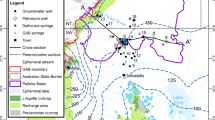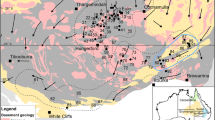Abstract
The mound springs of South Australia are a unique groundwater discharge feature of the Great Artesian Basin (GAB), a deep regional groundwater system that covers 22% of the Australian continent. They are the principal sources of surface water in the arid to semi-arid inland heart of Australia, and have great ecological, scientific, anthropological and economic significance. Excessive development of the Great Artesian Basin over the past century by European activity has seen an overall decline in the flows from the springs. Recent development of the water supply borefields for the Olympic Dam copper-uranium mine in the midst of one the most important spring groups has exacerbated this problem. A review of the history of the Olympic Dam borefields, an analysis of the impacts on the Mound Springs, and future recommendations for the return of environmental flows and protection of the springs is presented.
Similar content being viewed by others
Author information
Authors and Affiliations
Additional information
Received: 9 November 1998 · Accepted: 23 February 1999
Rights and permissions
About this article
Cite this article
Mudd, G. Mound springs of the Great Artesian Basin in South Australia: a case study from Olympic Dam. Environmental Geology 39, 463–476 (2000). https://doi.org/10.1007/s002540050452
Issue Date:
DOI: https://doi.org/10.1007/s002540050452




